Southwest Michigan field crops update – June 20, 2024
Soybeans began flowering, side dressed nitrogen applications continued in corn, and wheat kernels began to dry down.

Weather
This last week was hot and humid. Mostly light rainfall fell in popup showers, but some areas received significant precipitation of an inch or more in a single event. As we finish out this week, there will be a continuing chance for thunderstorms, especially in the afternoons and evenings when the atmospheric instability is the greatest. High temperatures and high humidity will continue throughout weekend before a cool front moves in, significantly reducing humidity and slightly reducing temperatures. Overall, growing degree day (GDD) accumulation is 10-14 days ahead.

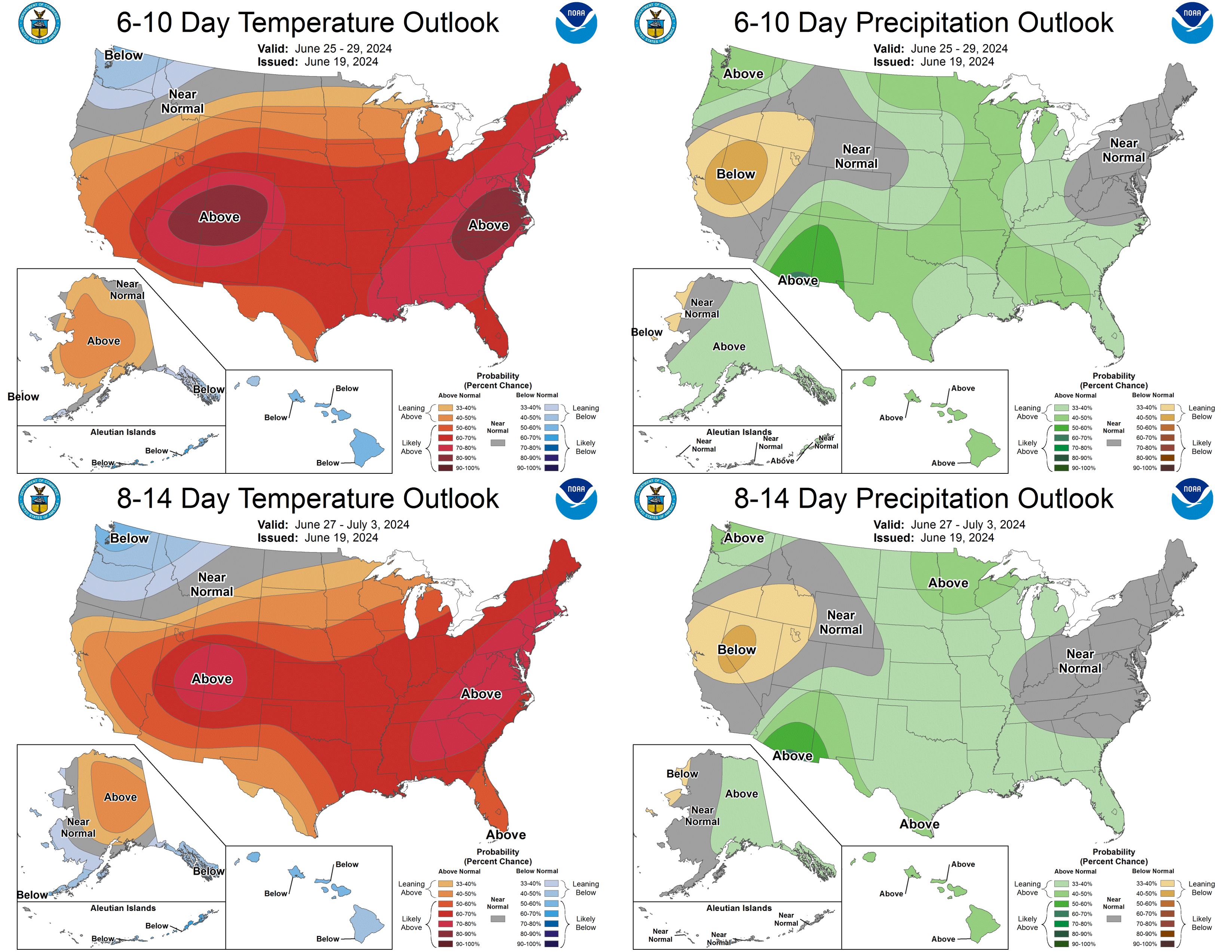
Crops and pests
Soybeans and corn have almost fully emerged and continue to be at varying crop stages. Some soybeans entered reproductive stages with flowering last week. As such, the window for post-emergent herbicide applications is narrowing. Glufosinate can be applied until R1, glyphosate can be applied through R1, and registered over-the-top dicamba products cannot be applied past June 30. Read the label carefully to make sure the herbicide can be applied at the specific crop stage before applying. As fields enter reproductive stages, white mold fungicide applications will begin to go out.
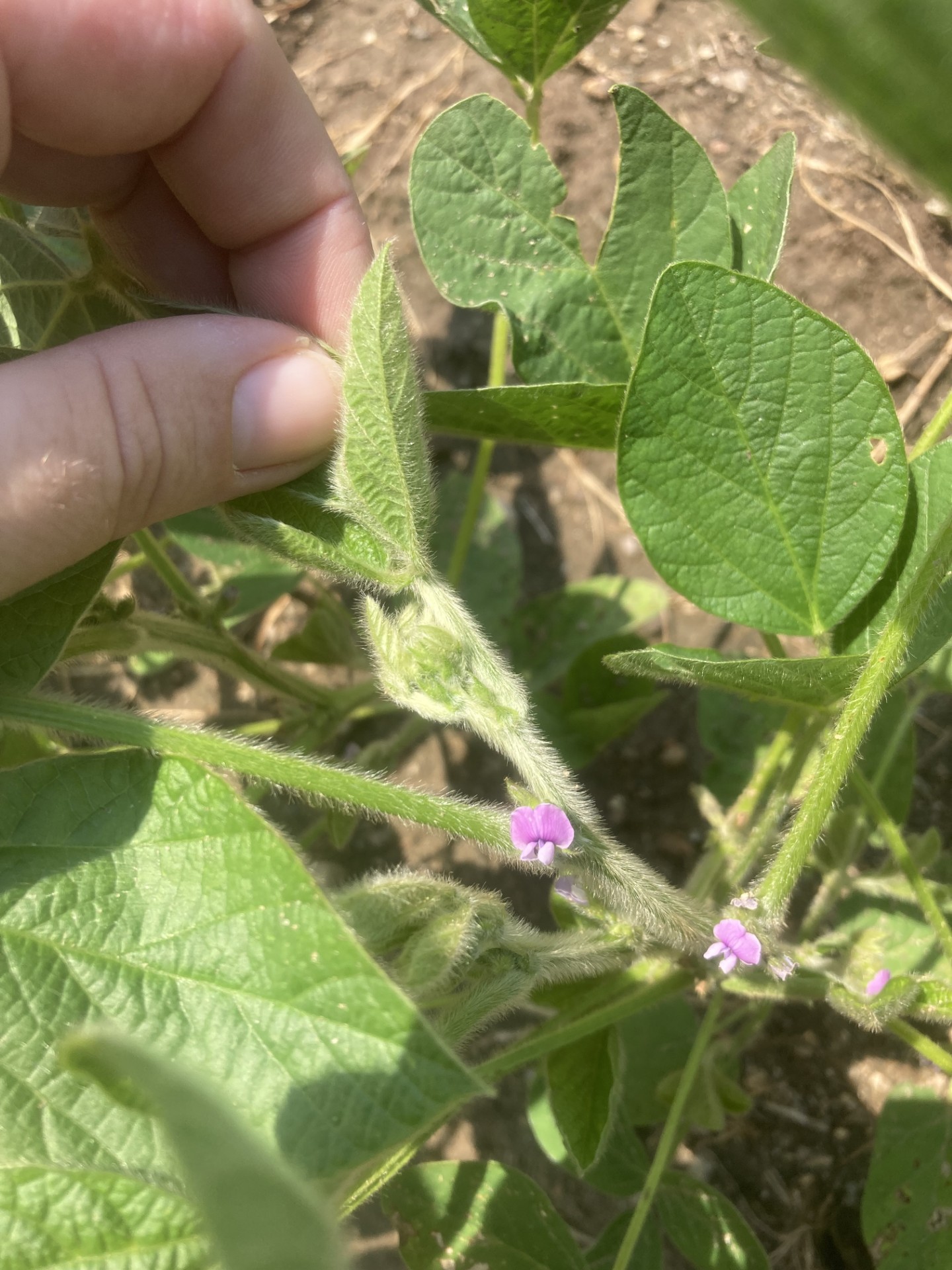
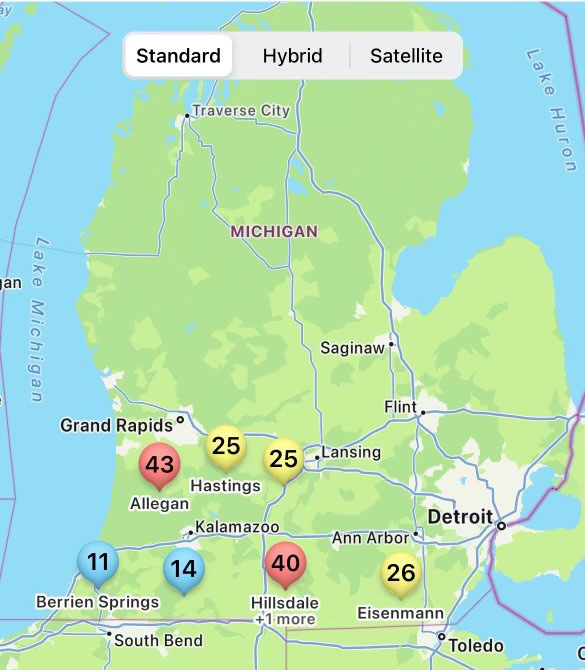
Corn continued to receive nitrogen applications, mostly as a sidedress. With high temperatures, sidedressed nitrogen is especially vulnerable to volatilization, so make sure to water it in with about 0.5 inches of water—whether that is irrigated or from a rainfall event—shortly after applying. As early planted corn progresses toward the end of the vegetative stages, questions about tar spot have arisen throughout the state. The Crop Protection Network recently published an article addressing tar spot questions and decision-making, which emphasizes the importance of using the appropriate fungicide active ingredients at the appropriate timing, which is between VT and R3. Risk and pressure levels will vary based on weather conditions, and forecasting apps such as Tarspotter can help with that.
Winter wheat is mostly at Feekes 11.3 now, which means that the kernels are hardened, physiologically mature, and decreasing in moisture. They are close to being ready to harvest and will continue to dry. The plant leaves and stems are yellowing and will become dead straw.
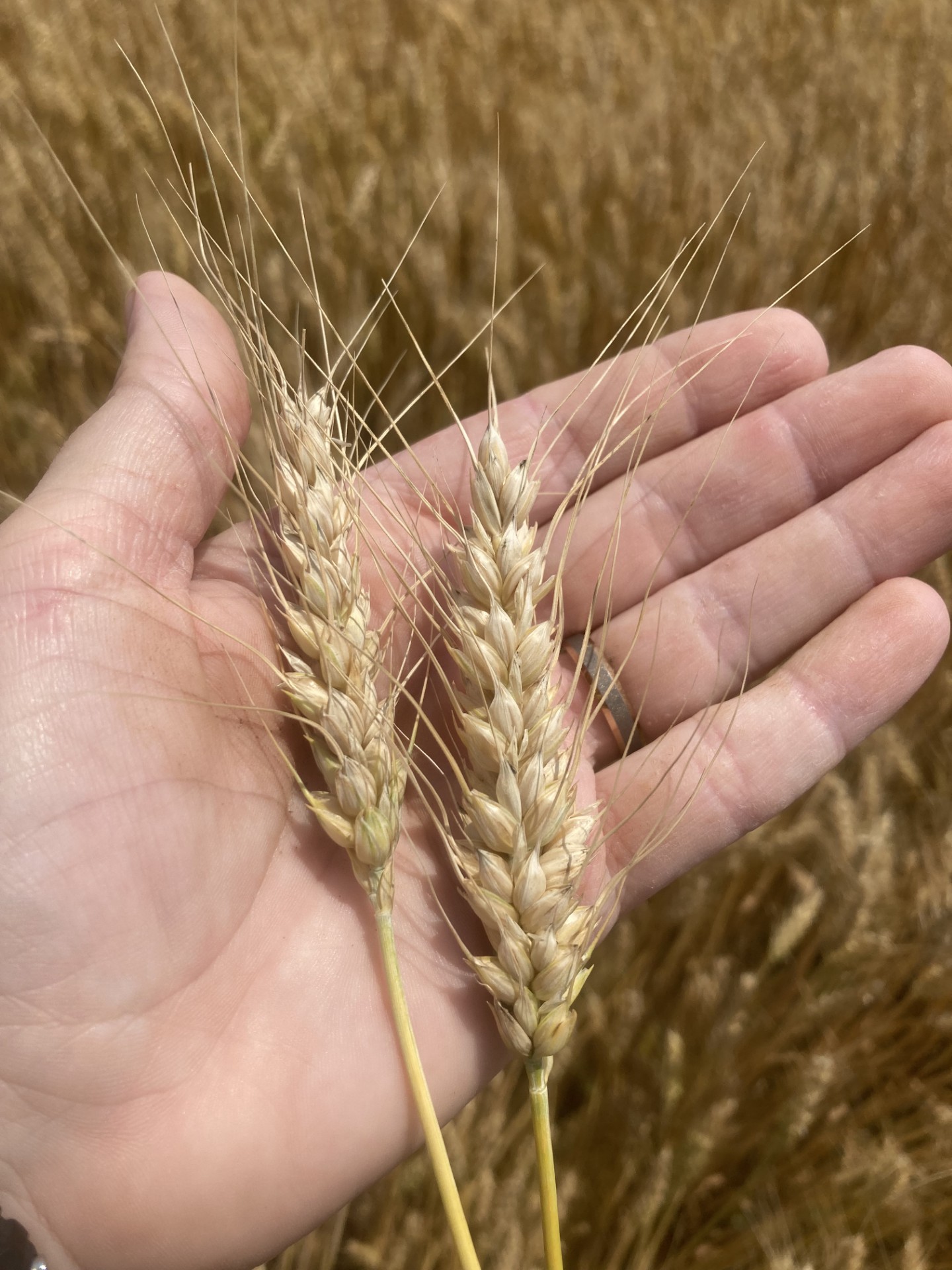
Many potatoes have finished flowering or are entering the beginning of the end of flowering. Early planted potatoes are nearing the end of seed treatment efficacy regarding aphid control, so aphid scouting should begin in the next week or two.
In alfalfa, second cuttings continued. Potato leafhopper is present throughout the state and is most damaging to fresh regrowth. Start sweeping for leafhopper a week after cutting. For plants under six inches tall, 20 leafhoppers in 100 sweeps is the action threshold. The 100 sweeps do not have to be consecutive—for example, you can do 10 rounds of 10 sweeps and add up the counts from each round of sweeps to find out the total number of leafhoppers in 100 sweeps.
Weekly field crop water use
|
Estimated weekly crop water use for field crops in Michigan for June 17 – 23. |
||||
|---|---|---|---|---|
|
Crop |
Growth stage |
Constatine |
Entrican |
Hart |
|
Corn |
V4 |
0.29 |
0.28 |
0.41 |
|
Soybeans |
V1 First node |
0.44 |
0.43 |
0.62 |
|
This table presents projected crop evapotranspiration values for field crops in Michigan and does not account for precipitation obtained during the week of calculation. The procedure used for the calculation was based on the FAO-56 single crop coefficient approach. Reference evapotranspiration values were obtained from MSU Enviroweather. Crop water use values were calculated by Angie Gradiz, MSU Extension agriculture water use efficiency educator; Lyndon Kelley, MSU and Purdue Extension irrigation educator; and Younsuk Dong, MSU irrigation and extension specialist. |
||||
The table above presents estimated crop water use for various field crops across three locations in Michigan. This data helps irrigation management decisions by showcasing potential crop evapotranspiration, calculated based on reference evapotranspiration and crop coefficients for each crop growth stage. It is crucial to note that crop water use values vary across regions due to differences in weather conditions, growth stages, agronomic practices and soil properties.
When using these values for irrigation scheduling, be mindful that they assume all applied irrigation water will be utilized by the plants without any loss. Additionally, these values do not account for any precipitation that may occur during the week of calculation. For more tools and information on irrigation scheduling tools, please refer to the Irrigation Scheduling Tools fact sheet.
Reference evapotranspiration data was obtained from Michigan State University Enviroweather, which also offers a model for determining potential crop evapotranspiration. To access this tool, visit https://enviroweather.msu.edu/, click on "Crops," select your crop, and use the potential evapotranspiration tool by choosing your nearest weather station, the latest date of interest and other crop information.
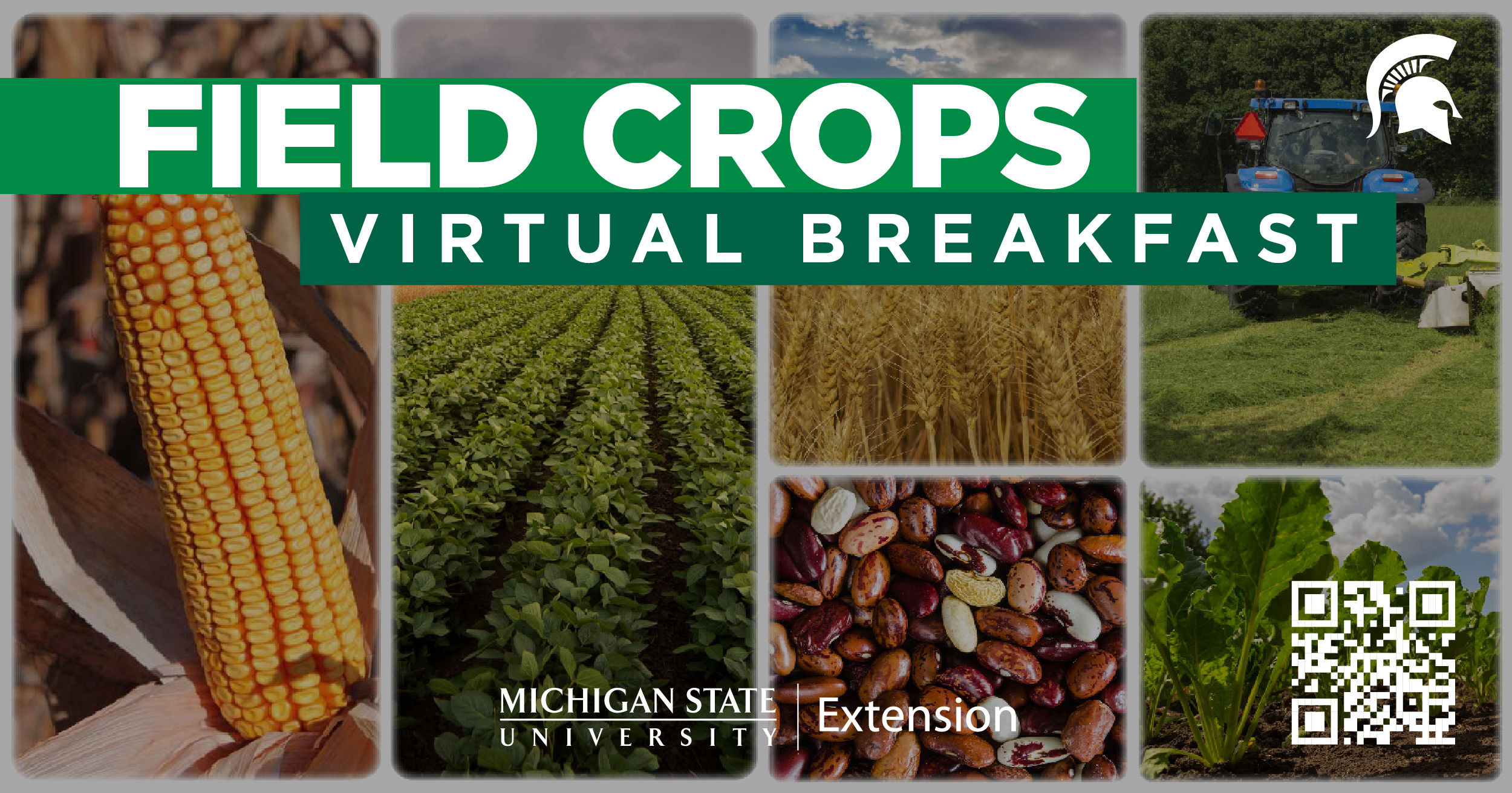
Cercospora in sugarbeets, presented by Jaime Willbur, was the topic for the Michigan State University Extension Field Crops Virtual Breakfast this week. Recordings of this and all the Virtual Breakfast meetings are closed-captioned and available at the Field Crops Virtual Breakfast webpage and the MSU Extension field crops team social media platforms: Facebook, Spotify, YouTube, Apple Podcasts and Twitter.



 Print
Print Email
Email




